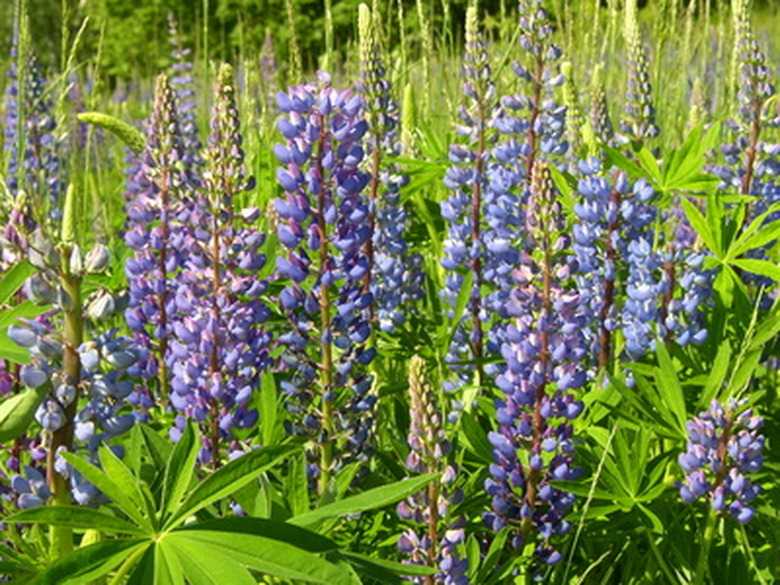Purple Flowering Plants In Maine
Maine offers a wide array of wildflowers, both native and introduced. Throughout the state wild lupine, trillium and other plants thrive. Some have become endangered, being pushed out by introduced species. Maine gardeners can help their native plants and wildlife by using native species in their gardens.
Purple Trillium
Purple trillium (Trillium erectum) grows on stout, fleshy stems and produces green leaves often marbled with purple. The maroon, white, reddish-purple or pink blossoms sit directly in the center of the plant top. More often than not, the blossoms are maroon. It produces a strong, sweet, fruity fragrance. Some plants are stronger smelling than others. The plant grows up to 1 1/2 feet tall and is often found in shady, wooded areas. The purple trillium prefers rich soils, that are well-drained with plenty of moisture.
- Maine offers a wide array of wildflowers, both native and introduced.
- The purple trillium prefers rich soils, that are well-drained with plenty of moisture.
Lupine
Growing to two feet in height, lupine (Lupinus perennis) produces pea-like blossoms in shades of violet, blue, white and at times, pink. Lupines prefer loose, well-drained sandy soils. Lupines have the amazing ability to fix nitrogen in the surrounding soil. Lupine is in an important food source for the federally endangered karner blue (Lycaeides melissa samuelis) butterfly.
Virginia Spiderwort (Tradescantia virginiana)
Virginia spiderwort grows to 23 inches in height. The foliage is fleshy and green, at times showing purple variations. Its blossoms range in shades of purple, violet, blue, white and pink. It can be found growing in areas with organic rich, well-drained soils. Indian tribes of North America used this plant as food. Young leaves were eaten raw or cooked until tender. By crushing the leaves or roots, a poultice was created to treat insect bites and even cancer.
- Growing to two feet in height, lupine (Lupinus perennis) produces pea-like blossoms in shades of violet, blue, white and at times, pink.
Cimicifuga (Cimicifuga racemosa)
Commonly known as black cohosh, this native perennial has green to purple foliage. Its blossoms are produced on racemes and grace the plant with their airy display in early summer. The flowers are white and fragrant. This plant prefers shady locations with moist soils that are rich in organic matter. North American Indian tribes have used parts of this plant medicinally; it can still be found today in some supplements and alternative medicines.
